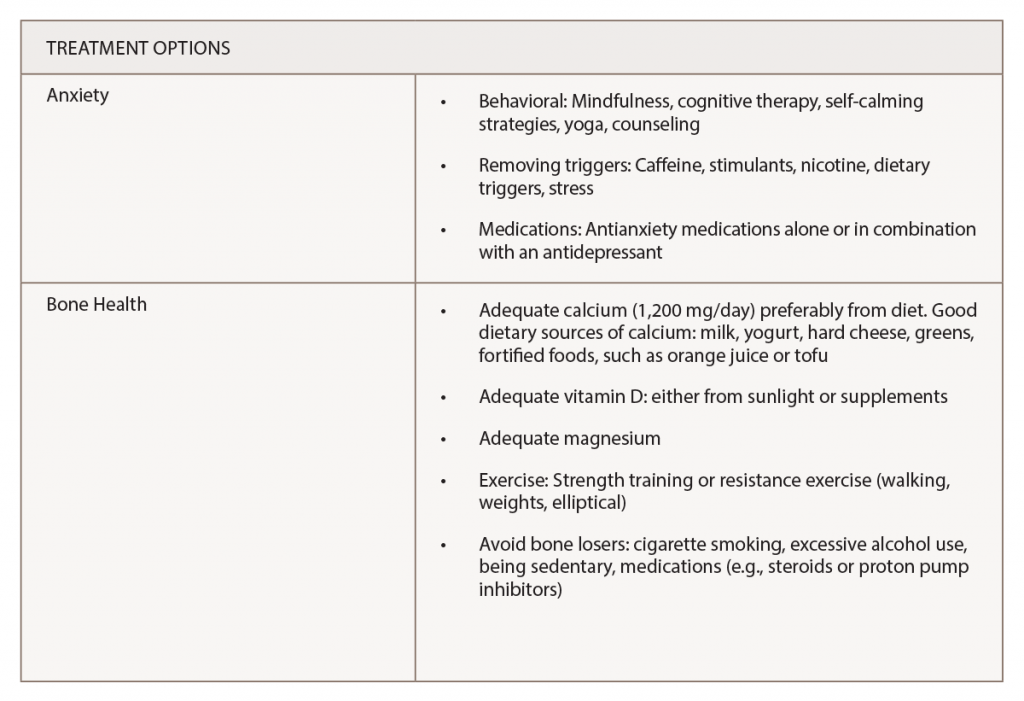Dr. Catalano emphasizes the association between high anxiety level and low BMD and fracture risk was independent of other risk factors for osteoporosis in postmenopausal women.
‘Although it’s not necessarily the rheumatologist’s job to treat anxiety, they can recognize & acknowledge the problem, discuss the issue with their patients & make a plan for further evaluation & management.’ —Dr. Pinkerton
Discussion
Commenting on the study, JoAnn V. Pinkerton, MD, executive director, North American Menopause Society, and professor of obstetrics and gynecology, University of Virginia Health System, Charlottesville, Va., underscores how anxiety may influence bone mineral density and fracture risk.
“Women who are anxious have higher cortisol and more markers of inflammation, which appear to induce bone loss by activating bone turnover and, thus, contributes to osteoporosis and fractures,” she says. In addition, she says that anxious women who are restless or fidgety may have lower weight and lower bone mass prior to menopause, placing them at higher risk of fracture once they go through menopause given the subsequent loss of hormones.
Dr. Pinkerton emphasizes the need for primary care physicians and specialty physicians, including rheumatologists, to recognize anxiety in their patients.
“Although it’s not necessarily the rheumatologist’s job to treat anxiety, they can recognize and acknowledge the problem, discuss the issue with their patients and make a plan for further evaluation and management through either the patient’s primary care physician or referral to a mental health specialist,” she says.
Asking some simple questions can help identify patients who are anxious (see Table 2).
In addition, Dr. Pinkerton highlights a number of treatment options for anxiety, as well as ways to maintain good bone health in perimenopausal and menopausal women (see Table 3).
For Dr. Catalano, focusing on the effect of anxiety on bone health provides physicians with another way to identify women at risk of osteoporosis and fracture.
“By our results, we hope to improve the physician’s ability to recognize postmenopausal women at higher risk of osteoporosis and related fractures to improve early diagnosis and prevent the first fracture,” he says.
He also emphasizes the need for physicians to consider fracture risk assessment in postmenopausal women with higher anxiety levels.



